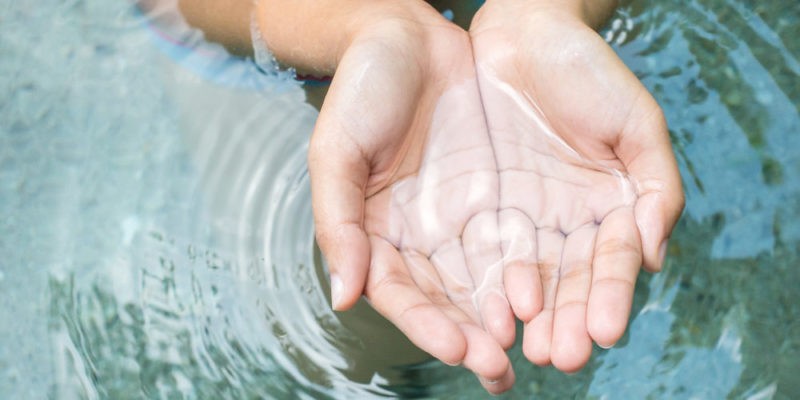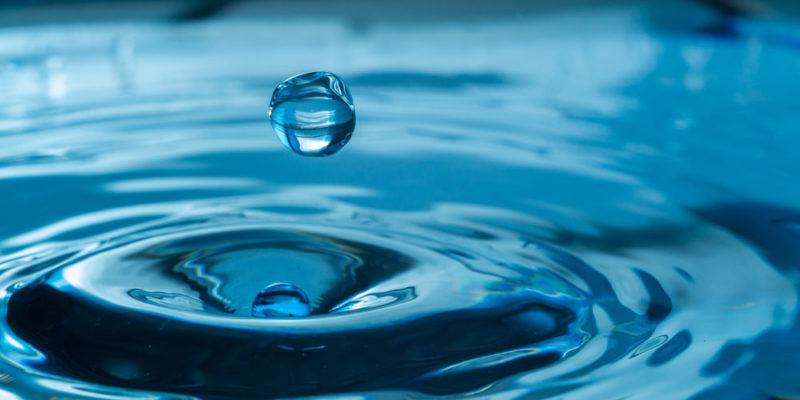We explain what drinking water is and what are the main characteristics. In addition, its chemical and microbiological characteristics.
Which is the potable water?
Water is an increasingly scarce resource and many populations in the world still remain without access to a source of drinking water. Institutions such as UNICEF and the World Health Organization (WHO) have the issue of access to drinking water as one of their priority objectives , since there is a direct relationship between access to drinking water and health.The WHO specifies that there is access to drinking water when its source is less than 1 kilometer away from the place of use, and whenever it is possible to reliably obtain at least 20 liters per day for each member of the family.
Drinking water characteristics :
-
Clean and safe
Drinking water

To make potable water from the mains from surface intakes that are not naturally drinkable (such as the Río de la Plata), a fairly complex corrective treatment must be carried out, which involves a first rough filtering in the intake or intake stage, and then elevation , coagulation, decantation, filtration and finally chlorination and alkalization.
In rural areas , where there is no potable water distribution system, the water often comes from deep underground sources (wells) or springs . The degree of contamination of these waters in general is not so high, which makes it possible to resort to the oldest and most universal method of disinfection of water at the household level: boiling the water. In this way at least the elimination of most of the pathogens ( bacteria and viruses ) that are transmitted through water is achieved , although it does not solve the problem of contamination with heavy metals , for example.
Filtration is also a simple method that removes intestinal parasite cloudiness and cysts, but fails to suppress smaller living things, such as viruses and bacteria.
-
Colorless
Odorless
Drinking water should not have an odor , as it should not contain anything that could generate it.
-
Tasteless
Free of suspended elements

It should not contain floating particles that generate turbidity.
-
Chemical characteristics
- pH between 6.5 and 8.5
- Minimum residual active chlorine: 0.2 mg / l
- Fluorides (F - ): 0.9 (lower limit); 1, 7 (upper limits) in areas with an average temperature of 10 ° C (in warmer areas, the limits are lower)
- Total hardness (as calcium carbonate): no more than 400 mg / liter
- Maximum chemical contents (in mg / liter):
- Total iron (Fe): 0.30
- Manganese (Mn): 0.10
- Mercury (Hg): 0.001
- Nickel (Ni): 0.02
- Nitrate (NO 3 - ): 45
- Nitrite (NO 2 - ): 0.10
- Silver (Ag): 0.05
- Lead (Pb): 0.05
- Selenium (Se): 0.01
- Sulfates (SO 4 = ): 400
- Ammonia (NH 4 + ) 0.20
- Aluminum (Al): 0.20
- Arsenic (As): 0.01
- Boron (B): 0.5
- Bromate: 0.01
- Cadmium (Cd): 0.005
- Cyanide (CN - ): 0.10
- Zinc (Zn): 5.0
- Chloride (Cl - ): 350
- Copper (Cu): 1.00
- Chromium (Cr): 0.05
You may be interested in: Chemical characteristics of water .
-
No organic pollutants
Microbiological characteristics

Limits are set to minimize the risk of contracting infectious diseases , basically childhood diarrhea, which are a major cause of malnutrition and mortality in underdeveloped areas. These limits are:
- Less than 100 colony forming units (CFU) per ml of total aerobic bacteria
- Less than 2 the most probable number (MPN) of coliform bacteria per 100 ml
- Escherichia coli : absence in 100 ml
- Pseudomonas aeruginosa : absence in 100 ml
-
Defined by regulatory institutions
The above content published at Collaborative Research Group is for informational and educational purposes only and has been developed by referring reliable sources and recommendations from technology experts. We do not have any contact with official entities nor do we intend to replace the information that they emit.
Abubakr Conner brings a diverse skill set to our team, and covers everything from analysis to the culture of food and drink. He Believes: "Education is the most powerful weapon that exists to change the world." .
Leave a reply
Your email address will not be published. Required fields are marked *Recent post

Sport: What Is It, Types, Risks, Features, Characteristics and Examples

Dogs: Emergence, Features, Characteristics, Feeding and Breeds

Story: Definition, Elements, Structure, Features and Characteristics

